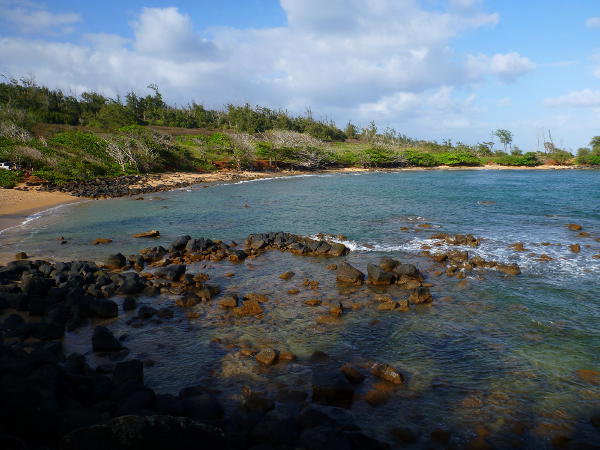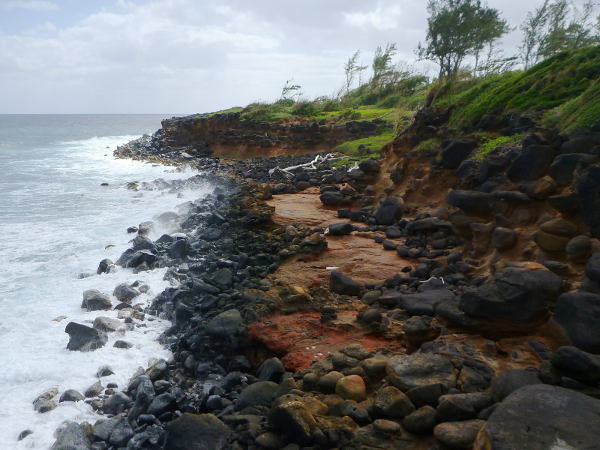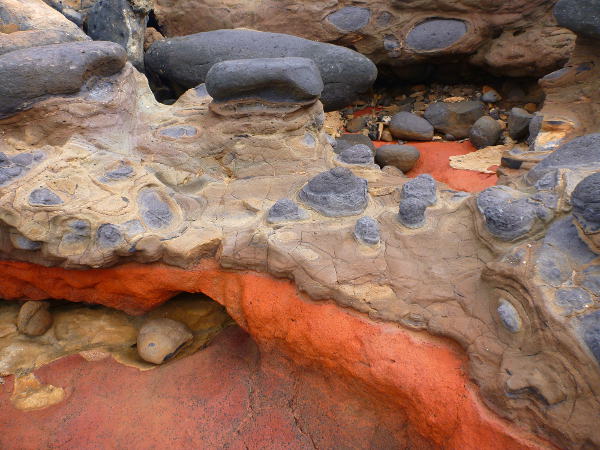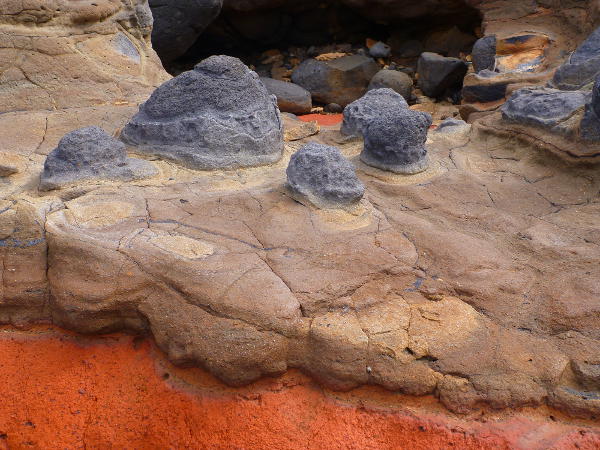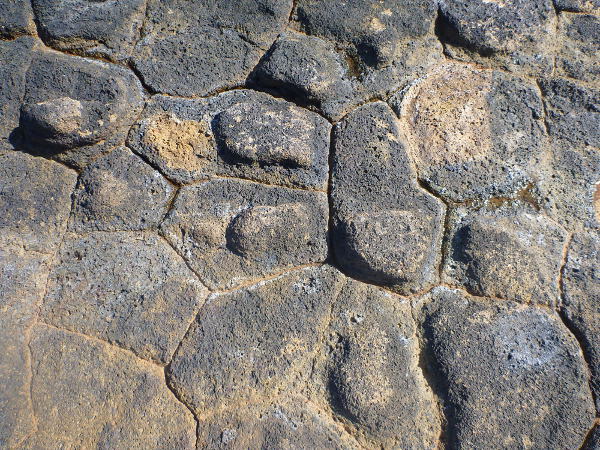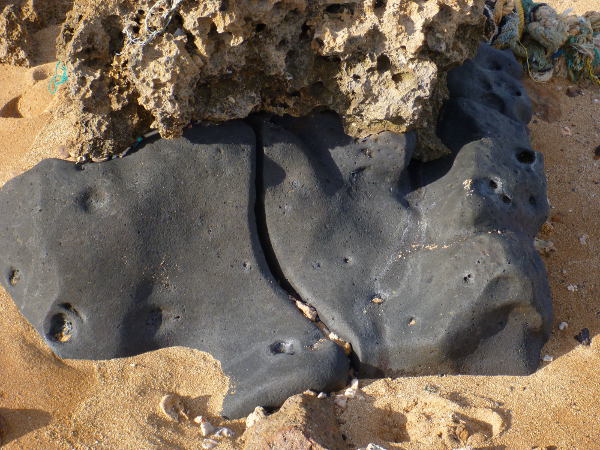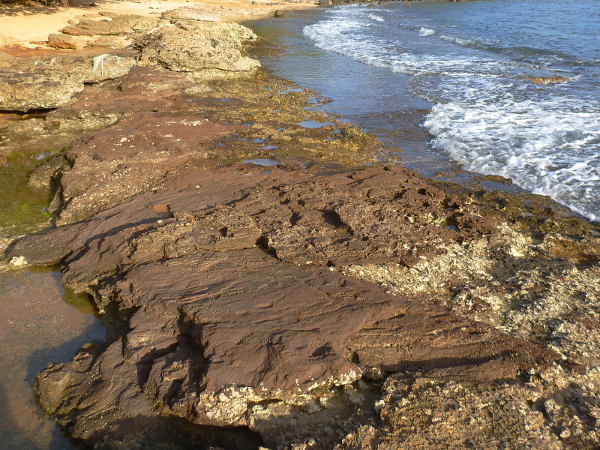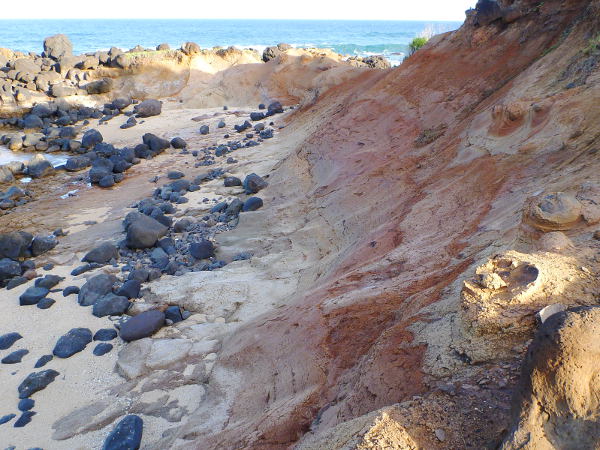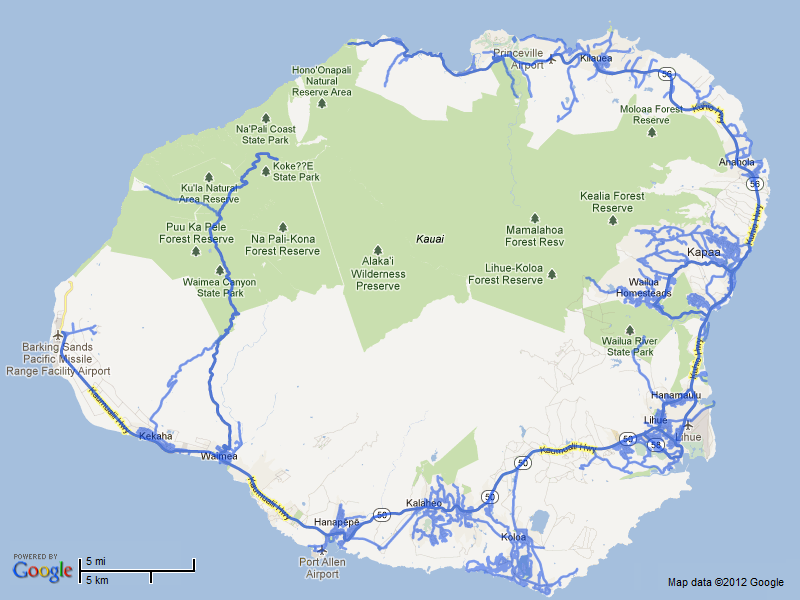Long ago, I thought I could avoid politics on this blog. But in the end, everything is politics. If you hike and you want to protect the environment, if you live somewhere with limited resources and you want to save them, instead of being common sense, it’s politics.
Some background: After governor Lingle’s ferry fiasco, our new Democratic governor Neil Abercrombie seemed fairly progressive and environmentally minded. He fooled a lot of us. Last year, he encouraged and signed into law the Public Land Development Corporation (PLDC). Like all states, Hawaii is losing tax revenue because of the economic downturn and having trouble funding all its departments. The Department of Land and Natural Resources (DLNR) is one of those deparments that provides services to the population (state parks, among others) without collect much revenue (a few usage fees, but no taxes). So it’s budget was cut (as were services and quality of the facilities), and its new mission is to make money somehow.
That somehow is through development, as in building things on the land that you can charge money to use. But instead of granting commercial concessions to build and operate these developments, the politicians chose a semi-independent corporation. You can read more about its creation and rationalization in these articles from last year. Joan Conrow also links back to her earlier articles about the PLDC, she is one of the few who were paying attention and trying to raise awareness. In the end, the PLDC sailed through the legislature and was signed into law by the governor without too much public awareness, or even well-defined rules. Google “Hawaii Act 55” for more.
Fast forward one year to tonight, when the rules governing the PLDC have been written outside of the legislative process, and, fortunately for the citizens, are being debated in public hearings. Now the true nature of the PLDC is revealed, and people who want to protect Hawaii’s environment and natural resources are up in arms. Here is a video from the meeting on the Big Island. There is a petition you can sign that explains the worst issues. Even the former DLNR chairperson under Lingle’s horrible administration, Laura Thielen, is against the PLDC. In meetings on other islands, many people had come to denounce not just the rules, but the PLDC itself and how it was created.
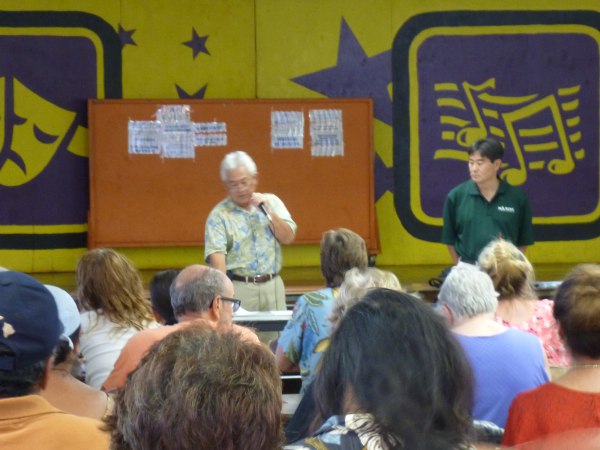
The photo above shows the PLDC representatives running the meeting in the Lihue elementary school cafeteria. I think the man on the left is Lloyd Haraguchi, the executive director of the PLDC. As the meeting dragged on and one speaker after another attacked the rules, the PLDC legislation, and the people who passed it, I started to formulate my own protest. But there were so many speakers that I had to leave before I could give my testimony. So I wrote it down when I got home:
Good Evening Mr Chairman,
My name is Mr. Localshill, I’ve been hired by MegaDevCorp to comment on the rules you’re proposing tonight. MegaDevCorp is a world-wide investment and development partnership that looks for opportunities to take money out of local economies. We’re a lot like Bain Capital, you might’ve heard of them. We are based on the mainland, though our tax shelter–I mean corporate headquarters–are in the Bahamas.
Whew, it’s getting late tonight–good thing you and I are getting paid to be here.
Anyways, I’ve identified 3 development opportunities on Kaua’i, and I just want to make sure the rules favor us so we don’t loose money.
1. Your harbors. We can take over your harbors and run them for a profit. We need the state to pass bonds to rebuild all the docks and buildings, and then we’ll manage them for you and charge 4 times what you guys get. But there are a lot of boat ramps that cut into our potential revenue, so you’ll need to stop maintaining those. Don’t worry, we’ll run a marketing campaign about how the public-private partnership is better for the people and gives them the services that DLNR was too underfunded to provide. But if that doesn’t work, the rules must include a guaranteed minimum payment from the state, in case we can’t collect enough usage fees.
2. Haena Luxury Condos and Time-Shares. Think of how much we can sell pieces of Bali-Hai for. We need to take over the Hawaiian lands and state park there, but don’t worry, we’ll keep 8 parking spaces in the 3-level parking garage for public access, just like at Ka’anapali. Hopefully, your rules will allow us to disregard shoreline setbacks, so we can get a lot of units real close to the beach for the view–pack’em in for better profitability. For building those towers, we also need rules that let us bring in Mexican labor because local labor is too expensive and may cause trouble if we unearth any bones in the sand.
3. A hotel in Kokee–we got the idea from your plan a while ago. Think of the lodge at Koele on Lanai: a grand lodge in the meadow (to replace that museum) and take back all the cabins and turn them into luxury bungalows. So we need rules that allow us to develop the state park and, ahem, evict the group who runs the museum. Probably need to tear down the CCC camp and clear some forest. We also need bigger and better roads up there, and close the campgrounds to keep the riff-raff out. Then we need space for a golf course through the meadow, and probably a zipline somewhere. We’ll sell it as an eco-lodge and offer helicopter tours. We’ll need you to put up a gate and give us 50% of the entrance fees, because we’ll be running the park for you.
Just think of all the great development we’ll provide for your tourists–you’ll see arrivals skyrocket because you’ll have more destinations and activities for them. However, we’re still expecting the state to spend millions on promoting the pristine beauty of Kaua’i so that our hotels are filled. And just think of all the minimum wage jobs for locals after we staff our management from the mainland. Because of these great benefits to the state, we’ll need some tax breaks and development incentives.
I know that’s a lot to ask for, so let’s talk it over sometime in private. I’d like to invite you and your family to the St. Regis for a week, and we’ll have time to chat on the golf course.
As I try to highlight in these extreme examples, there are several serious problems with the PLDC:
- The Hawaii government created an entity that has control of state (public) resources but which can exempt itself from the laws that apply to county and state government. The statutes of the PLDC clearly indicate that its projects are exempt from county zoning regulation. Essentially, this entity transfers the privileges of state sovereignty to private corporations.
- The PLDC is privatizing the state resources. As is always the case in these situations, potential profits are privatized, while the costs and risks are borne by the taxpayer. For example: if a developer creates a hotel on state land, the state still has to pay for sewer and road infrastructure to handle the additional burden. Incredibly, neighboring properties of a development project can be required to pay for infrastructure upgrades to match the development, for example installing sidewalks or underground utilities. Alternatively, if a development fails to meet its overly optimistic returns, the state is left paying for bonds or subsidies it promised to the private developer.
- A lot of native Hawaiians are opposed because most of the lands proposed for development are the so-called “ceded lands” that belonged to the overthrown Hawaiian Kingdom and are supposed to be held in trust. The state has always sought ways to get money for those lands, and being barred from selling them (they tried, the state supreme court stopped them) the PLDC was created to develop them with as little oversight as possible. The ceded lands are an interesting case because there are pieces of prime real-estate in towns, cities, and coastal areas that could be turned into housing or condos for tourists at prime rates. But then the land is gone and the development potential used up forever, in return for a small percentage of the revenue. The PLDC locks the native Hawaiians out of developing their own land, and gives the profits of development to outside corporations.
- The money has to come from somewhere. Normally, the state collects taxes and fees to provide services such as running a harbor. If a private company provides the same services, they need the same personnel and thus have the same cost, but they have to collect extra money to pay the state for the privilege, as well as for their profit. So somebody is going to pay more, and it’s always the taxpayer, the service user, or the tourist. The puropose of the corporation is to control the resource in order to extract extra money out of it for the benefit of its executives and shareholders. The purpose of the state is to hold and develop resources for the benefit of (and lowest cost to) the taxpayer.
- The PLDC is just another layer of bureaucracy, and a highly paid one at that. The cost of that bureaucracy is hidden because it pays itself by subtracting money from the money it collects for the state–thus increasing the cost of development. Also, the PLDC board members wield great power but don’t seem accountable to anyone. They are seeming free from state ethics and transparency rules and they have great leeway to change their own rules.
- And perhaps worst of all: by design, the public is shut out of the development process. The state has strict rules for soliciting input and organizing meetings in the community of those who are affected by whatever it builds or develops. The PLDC is designed so that none of those rules apply to it. It can operate out of Honolulu, make decisions, and avoid scrutiny and legal challenges. It doesn’t have to hold hearing and take public input on the neighboring islands that are affected. It has the power, money, and land from the state, but it lacks the accountability to and oversight from the public.
The normal way to develop state land or redevelop existing facilities such as the harbors is for the DLNR to grant a concession. The private developer invests into the project, recieves profits, and pays fees back to the state. The difference between a concession and the proposed PLDC is that state employees seek bids, approve contracts, and manage the concession. They have to abide by state laws including holding hearings and considering public input. All records are public and can be obtained upon demand. They are paid their normal salaries, not from some monies collected from the developer. The PLDC is just a way to avoid legitimate oversight and skim money from taxpayers, which is why it should be repealed.
The scary part is that my examples may not be so extreme. All it takes is a rotten politician, or a really greedy corporation, or a governor desperate to balance the budget before his re-election.
